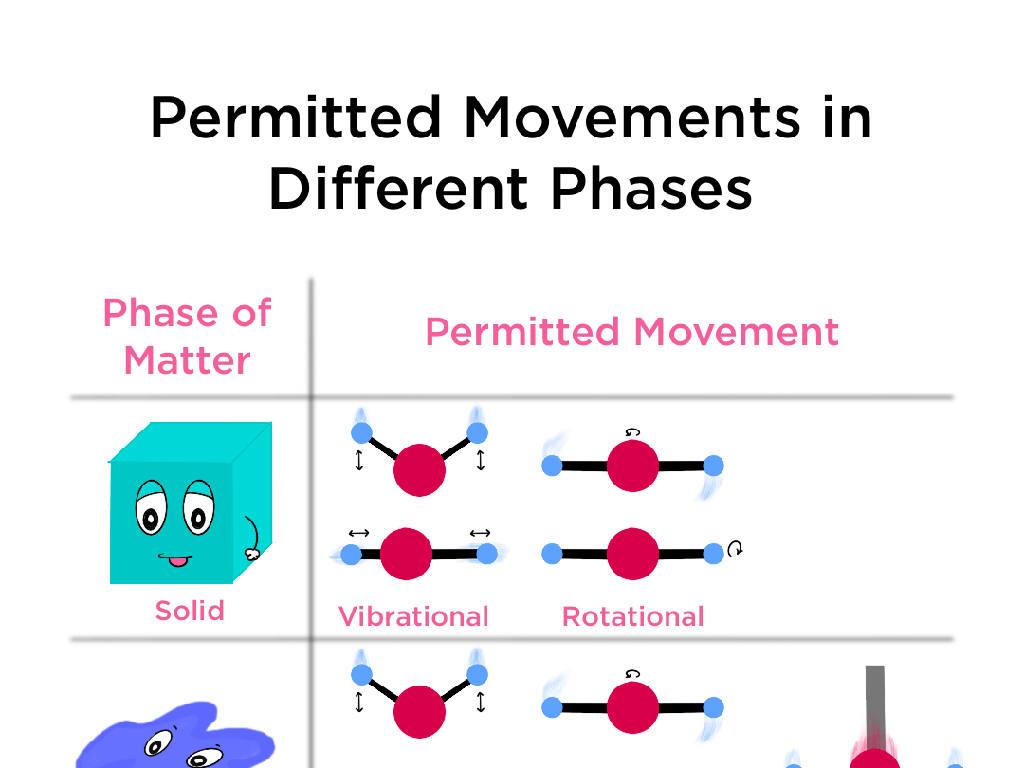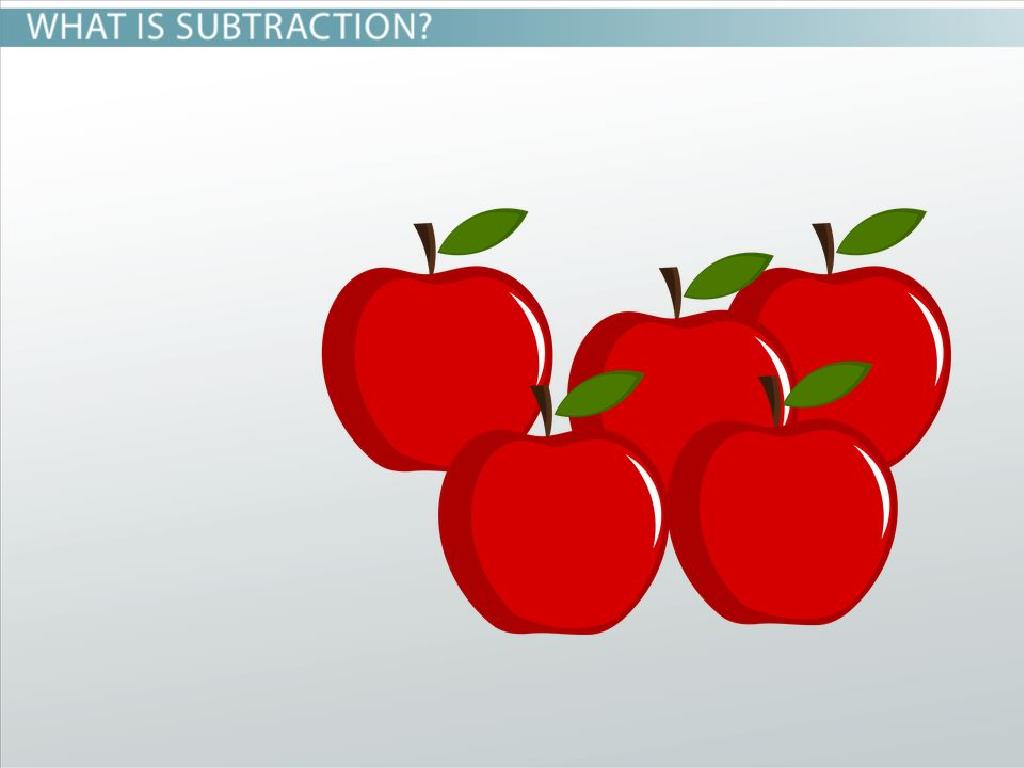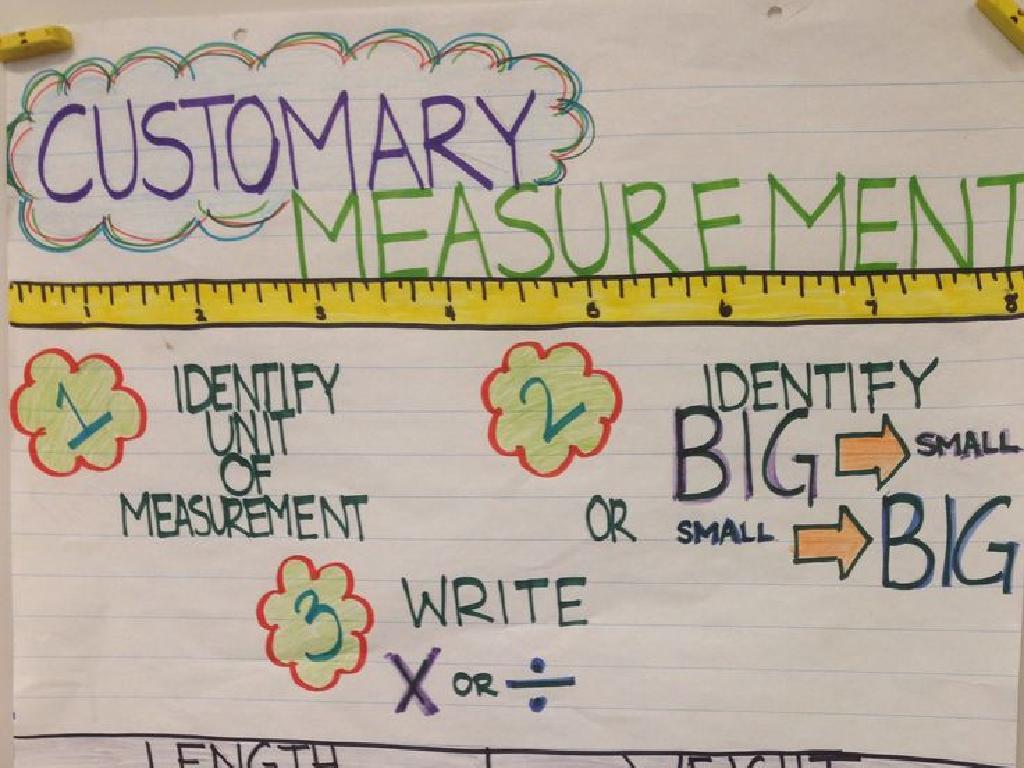Is The Pronoun Reflexive Or Intensive?
Subject: Language arts
Grade: Eighth grade
Topic: Pronoun Types
Please LOG IN to download the presentation. Access is available to registered users only.
View More Content
Pronoun Types: Reflexive vs. Intensive
– Differentiating pronouns in sentences
– Reflexive pronouns explained
– Reflects back to the subject, e.g., ‘She taught herself.’
– Intensive pronouns explained
– Emphasizes a noun or pronoun, e.g., ‘The CEO himself.’
– Review of pronoun types
|
This slide introduces students to the specific roles of reflexive and intensive pronouns, which are often confused due to their similar forms. Begin by explaining how pronouns can function differently in sentences, serving as subjects, objects, or to show possession. Then, delve into reflexive pronouns, which are used when the subject and the object of the sentence are the same, and the action ‘reflects back’ to the subject. Next, describe intensive pronouns, which are used to emphasize another noun or pronoun in the sentence. Conclude with a quick review of all the pronoun types previously covered, ensuring students understand the distinctions between them. Encourage students to create sentences using both reflexive and intensive pronouns to solidify their understanding.
Understanding Reflexive Pronouns
– Define Reflexive Pronouns
– Pronouns ending in -self or -selves
– Pronouns refer to sentence subject
– They act as direct objects, indirect objects, or objects of a preposition
– Examples: myself, yourself, etc.
– ‘I did the homework myself.’ – ‘myself’ refers back to ‘I’
– Identify reflexive pronouns in sentences
– Find and underline reflexive pronouns in given examples
|
This slide introduces reflexive pronouns, which are used when the subject and the object of a sentence are the same. Emphasize that reflexive pronouns always end in -self or -selves and are essential for correct sentence structure. Provide clear examples and ask students to identify the reflexive pronouns in sample sentences. Encourage them to explain why each pronoun is reflexive based on its function in the sentence. This will help them distinguish reflexive pronouns from intensive pronouns in future lessons.
Exploring Intensive Pronouns
– Define Intensive Pronouns
– Words that add emphasis to the subject, like ‘himself’ or ‘themselves’
– Emphasize the sentence’s subject
– Same as reflexive, different use
– Though identical in form to reflexive pronouns, their function is to highlight rather than reflect
– Identify in sample sentences
– Example: ‘The president himself presented the award.’
|
Intensive pronouns are used to add emphasis to the subject of the sentence and are not essential to the sentence’s meaning they can be removed without changing the sentence’s essence. They are identical to reflexive pronouns in form (myself, yourself, himself, herself, itself, ourselves, yourselves, themselves) but serve a different function. While reflexive pronouns reflect the action back onto the subject, intensive pronouns intensify the presence of the subject. In class, provide students with sentences and ask them to identify the intensive pronouns and discuss the effect of removing them. This will help students understand the non-essential, yet impactful role of intensive pronouns.
Reflexive vs. Intensive Pronouns
– Distinguishing pronoun types
– Learn key differences to identify each pronoun
– Reflexive pronouns’ role
– They reflect back to the subject, e.g., ‘She herself.’
– Intensive pronouns’ role
– They emphasize a noun, removable, e.g., ‘The CEO himself.’
– Sentence analysis practice
– We’ll analyze examples to practice identification.
|
This slide aims to help students differentiate between reflexive and intensive pronouns, which are often confused. Reflexive pronouns are necessary for the sentence to make sense because they refer back to the subject of the sentence. Intensive pronouns, on the other hand, are used for emphasis and can be removed without altering the meaning of the sentence. To reinforce this lesson, students will analyze sentences to determine whether the pronouns used are reflexive or intensive. Encourage students to look for clues in the sentence structure and to test the sentence’s meaning with and without the pronoun to see if it changes.
Let’s Practice: Reflexive vs. Intensive Pronouns
– Identify pronouns in sentences
– Determine reflexive or intensive
– Is it reflecting the subject or emphasizing?
– Discuss the reason for classification
– Reflective acts back on the subject, intensive adds emphasis
– Examples: ‘myself’, ‘himself’
– ‘I did the homework myself’ (reflexive), ‘The president himself gave the award’ (intensive)
|
This slide is for a class activity where students will practice distinguishing between reflexive and intensive pronouns. Provide sentences and have students identify the pronouns used. Then, they should determine whether each pronoun is reflexive, acting back on the subject, or intensive, adding emphasis to the noun. Discuss as a class why each pronoun is used in that way. For example, ‘myself’ in ‘I completed the project myself’ is reflexive because it reflects back to the subject ‘I’. In contrast, ‘himself’ in ‘The CEO himself approved the project’ is intensive because it emphasizes the subject ‘CEO’. Encourage students to explain their reasoning for each decision. This will help them understand the function and importance of pronouns in sentences.
Group Activity: Crafting Sentences with Pronouns
– Create a sentence with a reflexive pronoun
– Create a sentence with an intensive pronoun
– Share your sentences with the class
– Discuss as a group and decide on the best examples to present
– Class votes on pronoun usage
– Understand the correct use of each pronoun type through voting
|
This group activity is designed to engage students in learning the differences between reflexive and intensive pronouns. Divide the class into small groups and instruct them to create one sentence that includes a reflexive pronoun (e.g., ‘She made herself a sandwich.’) and another sentence with an intensive pronoun (e.g., ‘The teacher himself gave us the homework.’). After crafting their sentences, each group will share them with the class. The rest of the class will vote on whether the pronouns are used correctly, promoting active participation and peer learning. This activity will help reinforce the lesson by providing practical application and immediate feedback. For the teacher: Prepare a list of reflexive and intensive pronouns as a reference for the students, and be ready to provide guidance and clarification as needed.
Class Activity: Reflexive vs. Intensive Pronouns
– Team up for ‘Pronoun Hunt’
– Find reflexive/intensive pronouns in excerpts
– Look for words like ‘myself’, ‘himself’, etc.
– Present findings with reasoning
– Explain why a pronoun is reflexive or intensive
– Understand pronoun usage
|
This activity is designed to help students differentiate between reflexive and intensive pronouns through practical application. Students will work in pairs to encourage collaboration. Provide them with various literature excerpts that contain both types of pronouns. After identifying the pronouns, each pair will present their findings to the class, explaining the function of each pronoun in the sentence. This will reinforce their understanding of how reflexive pronouns are used for emphasis, while intensive pronouns reflect back to the subject. Encourage students to discuss and debate their reasoning to deepen their comprehension. Possible variations of the activity could include creating their own sentences using both types of pronouns or identifying the pronouns in a piece of their own writing.
Conclusion & Homework: Pronouns in Action
– Recap reflexive vs. intensive
– Reflexive pronouns reflect back to the subject. Intensive pronouns emphasize a noun.
– Why pronoun types matter
– Understanding different pronouns improves clarity and precision in writing.
– Homework: Craft a short story
– Use at least five of each pronoun type to show understanding.
– Include 5 reflexive, 5 intensive
– This will help demonstrate mastery of pronoun usage in a creative context.
|
As we wrap up, ensure students can distinguish between reflexive pronouns (e.g., ‘himself’) and intensive pronouns (e.g., ‘himself’ for emphasis). Emphasize the importance of pronoun types in writing for clarity and avoiding ambiguity. For homework, students will write a short story incorporating at least five reflexive and five intensive pronouns, allowing them to apply what they’ve learned creatively. This exercise will help solidify their understanding and provide a practical application of pronoun types. In the next class, we can discuss some of the stories and the pronouns used.





